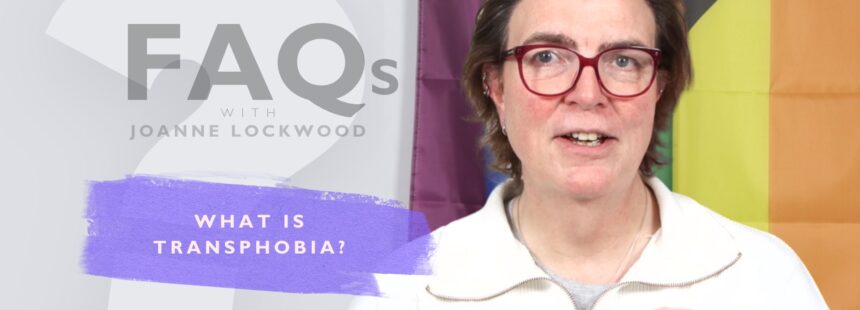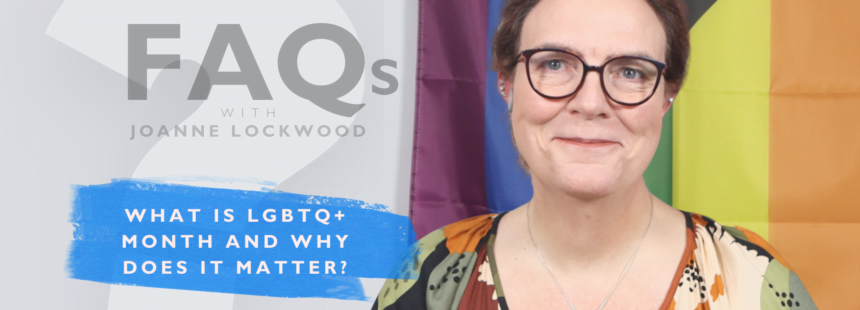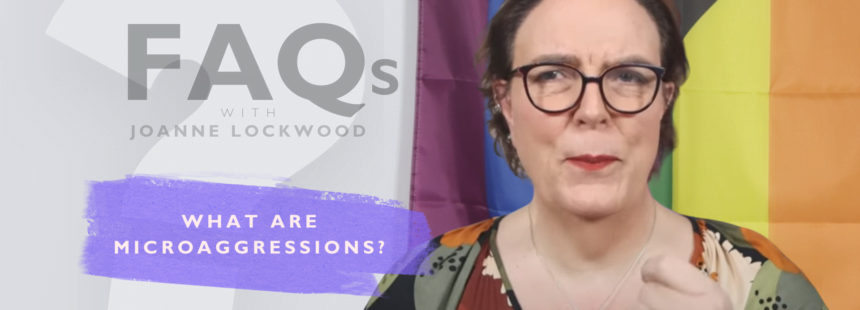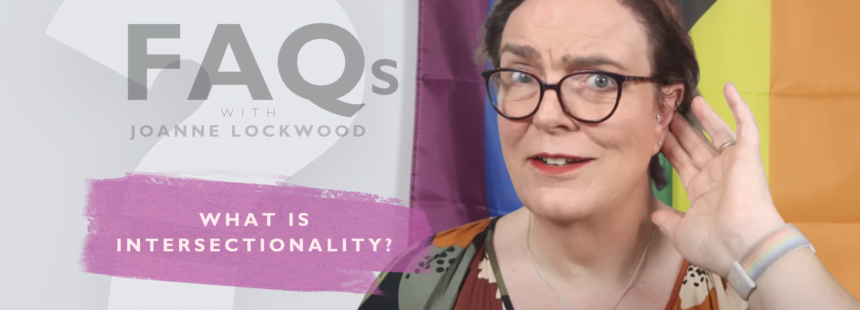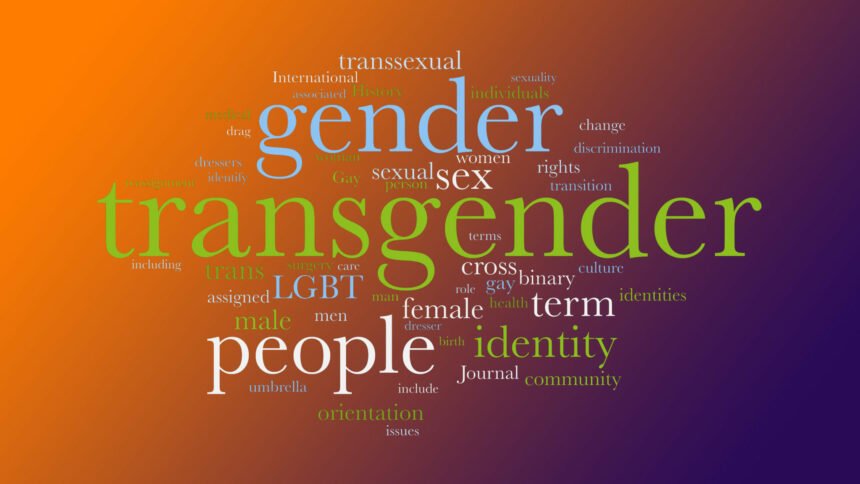
Common Trans Terminology
It’s fair to say many people don’t know how to speak to or about transgender people. So what do the terms involved mean and what’s considered polite?
Below are a number of terms and phrases that transgender individuals may use or identity with. In all cases, one should respect the person, how they identify and which terms resonate.
Language evolves over time, some phrases which were in common usage 20 years ago may well be taken as offensive in modern expression.
Trans
Often Trans is used as shorthand to mean transgender or transsexual – or sometimes to be inclusive of a wide variety of identities under the transgender umbrella. Because its meaning is not precise or widely understood, be careful when using it with audiences who may not understand what it means.
Avoid unless used in a direct quote or in cases where you can clearly explain the term’s meaning in the context of your story.
Sometimes it is followed by an asterisk (*), i.e. trans*. The asterisk is a “wildcard” that stands for the multitude of ways that trans people identify.
Use of the asterisk is considered by many as problematic and should be avoided where possible.
Gender Identity
A person’s internal, deeply held sense of their gender. For transgender people, their own internal gender identity does not match the sex they were assigned at birth. Most people have a gender identity of man or woman (or boy or girl). For some people, their gender identity does not fit neatly into one of those two choices (see non-binary and/or genderqueer below.) Unlike gender expression (see below) gender identity is not visible to others.
Gender Expression
External manifestations of gender, expressed through a person’s name, pronouns, clothing, haircut, behaviour, voice, and/or body characteristics. Society identifies these cues as masculine and feminine, although what is considered masculine or feminine changes over time and varies by culture. Typically, transgender people seek to align their gender expression with their gender identity, rather than the sex they were assigned at birth.
Transgender (adj.)
An umbrella term for people whose gender identity and/or gender expression differs from what is typically associated with the sex they were assigned at birth. People under the transgender umbrella may describe themselves using one or more of a wide variety of terms – including transgender. Some of those terms are defined below. Use the descriptive term preferred by the person. Many transgender people are prescribed hormones by their doctors to bring their bodies into alignment with their gender identity. Some undergo surgery as well. But not all transgender people can or will take those steps, and a transgender identity is not dependent upon physical appearance or medical procedures.
Transgender is an adjective therefore use as; a transgender woman, a transgender man, or a transgender individual.
Transsexual (adj.)
An older term that originated in the medical and psychological communities. Still preferred by some people who have permanently changed – or seek to change – their bodies through medical interventions, including but not limited to hormones and/or surgeries. Unlike transgender, transsexual is not an umbrella term. Many transgender people do not identify as transsexual and prefer the word transgender. It is best to ask which term a person prefers.
If preferred, use as an adjective: transsexual woman, transsexual man, or transsexual individual.
Cross-dresser (CD)
While anyone may wear clothes associated with a different sex, the term cross-dresser is typically used to refer to men who occasionally wear clothes, makeup, and accessories culturally associated with women. Those men typically identify as heterosexual.
This activity is a form of gender expression and not done for entertainment purposes.
Cross-dressers do not wish to permanently change their sex or live full-time as women. Replaces the term “transvestite” (TV).
Transition or Transitioning
Transition refers to the process of changing one’s sex characteristics, gender expression and/or lifestyle in order to better align with one’s gender identity. Any transgender person may wish to transition, including those with non-binary identities. However, transition is not necessary to be transgender, and some transgender people prefer not to transition for a variety of reasons.
There are three major kinds of transition:
Social Transition
Social transitioning is the social portion of a transition, in which a transgender person makes others aware of their gender identity by going public. Some parts of social transition can include:
- Telling people about your gender identity, whether or not they are aware of your assigned sex and/or transgender status.
- Changing name used within social interactions.
- Asking others to use different pronouns, titles and other gendered language in reference to you
- Changing gender expression, whether or not the new gender expression corresponds to any traditional gender roles.
Social transition is one of the easiest to achieve, as unlike medical transition or legal transition it can be completed by the individual within their social group. However, it can also be daunting as there is a risk of a transphobic reaction, ranging from intentional misgendering to serious danger.
Many people choose to transition in different social groups at different points in time. For instance, someone may have socially transitioned with their friendship group, but not yet informed anyone in their workplace of their true gender.
In some cases, evidence of social transition for a period of time may be required in order to begin medical or legal transition. This is a form of gatekeeping.
Medical Transition
Medical transition is a part of transition in which a transgender person undergoes medical treatments so that their sex characteristics better match their gender identity. Medical transition can be described as feminising (for transfeminine people), masculinising (for transmasculine people) or gender neutralizing, where sex characteristics are removed or made androgynous, which may be desired by non-binary people, especially those who are agender or neutrois.
Medical transition generally requires the approval of a doctor before treatment can begin. This often means that one must be diagnosed with Gender Dysphoria before being able to transition medically. Some doctors require a social transition to have been completed for at least a year or two before surgery can take place. These restrictions are a form of gatekeeping.
Examples of procedures involved in medical transition may include:
- Gender confirmation surgery, which includes top surgery and bottom surgery along with other procedures.
- Hormone Replacement Therapy, involving the taking of sex hormones such as testosterone or oestrogen.
- Puberty blockers to delay puberty for transgender children and teenagers.
- Voice therapy to change the pitch of one’s voice.
- Epilation, Electrolysis or Laser hair removal in order to reduce body and/or facial hair.
Always avoid the phrase “sex change”.
Legal Transition
Legal gender refers to a person’s gender as it is recognized in legal contexts in their country of residence. This may include how their gender is recorded on identification, such as passports and driving licenses. A person’s legal gender is normally initially recorded as their gender assigned at birth.
For transgender people, legally changing gender is often a part of transitioning. It may be necessary to legally change one’s gender before being able to change name or title. It is also necessary to acquire an ID which reflects current gender identity, which is normally needed to gain employment or housing without revealing transgender status (while “stealth”).
Many countries have prerequisites before a legal change of gender can be recognised. This may include having medically transitioned, or having been diagnosed with Gender Dysphoria. This is a form of gatekeeping.
In countries which do not have marriage equality for same-gender couples, change of gender can result in any existing marriage being annulled. In the UK, spouses currently have the opportunity to veto any change of legal gender of their partner before a Gender Recognition Certificate (GRC) can be issued.
Some countries have a third gender for Non-binary and intersex people, though most do not.
Each of these types can involve many separate steps, and every person will have different desires for their individual transition – some may only want to transition socially, others may wish to take hormones but not have surgery, etc. Depending on the kind of transition desired, the process can take several years to complete.
Gender Identity Disorder (GID)
outdated, see Gender Dysphoria)
Gender Dysphoria
Gender dysphoria is a condition where a person experiences discomfort or distress because there’s a mismatch between their biological sex and gender identity.
It has also been known previously as Gender Identity Disorder (GID), Gender Incongruence or Transgenderism, but these terms should be avoided as they are outdated and considered inaccurate or misleading.
This mismatch between sex and gender identity can lead to distressing and uncomfortable feelings that are called Gender Dysphoria.
Gender Dysphoria is a recognised medical condition, for which treatment is sometimes appropriate. It’s not a mental illness. Some people with Gender Dysphoria have a strong and persistent desire to live according to their Gender Identity, rather than their biological sex. These people are sometimes called transsexual or trans people. Some trans people have treatment to make their physical appearance more consistent with their gender identity.
Transgender individuals are not cross-dressers or drag kings/queens. Always use the term preferred by the person. Do not use the word “transvestite” at all, unless someone specifically self-identifies that way.
Sex
The classification of a person as male or female. At birth, infants are assigned a sex, usually based on the appearance of their external anatomy. (This is what is written on the birth certificate.) A person’s sex, however, is actually a combination of bodily characteristics including: chromosomes, hormones, internal and external reproductive organs, and secondary sex characteristics.
Sometimes referred to a SAAB – Sex Assigned at Birth
Sexual Orientation
Describes a person’s enduring physical, romantic, and/or emotional attraction to another person. Gender identity and sexual orientation are not the same. Transgender people may be straight, lesbian, gay, bisexual, or queer. For example, a person who transitions from male to female and is attracted solely to men would typically identify as a straight woman.
Sex Reassignment Surgery (SRS)
Also called Gender Confirmation Surgery (GCS), and sometimes Gender or Genital Reassignment Surgery (GRS). Refers to doctor-supervised surgical interventions, and is only one small part of transition (see transition above).
Avoid the phrase “sex change operation.” Do not refer to someone as being “pre-op” or “post-op.” Not all transgender people choose to, or can afford to, undergo medical surgeries.
Always avoid overemphasizing the role of surgeries in the transition process.
Other terms you might hear
You may hear the following terms when doing research on transgender issues or speaking to an interview subject someone. As they are not commonly known outside the LGBT+ community, they will require context and definition if used in mainstream conversations.
Cisgender
A term used by some to describe people who are not transgender. “Cis-” is a Latin prefix meaning “on the same side as,” and is therefore an antonym of “trans-.” A more widely understood way to describe people who are not transgender is simply to say non-transgender people.
Gender Non-Conforming
A term used to describe some people whose gender expression is different from conventional expectations of masculinity and femininity.
Not all gender non-conforming people identify as transgender; nor are all transgender people gender non-conforming.
Many people have gender expressions that are not entirely conventional – that fact alone does not make them transgender. Many transgender men and women have gender expressions that are conventionally masculine or feminine. Simply being transgender does not make someone gender non-conforming.
The term is not a synonym for transgender or transsexual and should only be used if someone self-identifies as gender non-conforming.
Non-binary and/or genderqueer
Terms used by some people who experience their gender identity and/or gender expression as falling outside the categories of man and woman. They may define their gender as falling somewhere in between man and woman, or they may define it as wholly different from these terms.
The term is not a synonym for transgender or transsexual and should only be used if someone self-identifies as non-binary and/or genderqueer.
Cisnormative
Cisnormativity is the assumption that all, or almost all, individuals are cisgender. Although transgender-identified people comprise a fairly small percentage of the human population, many trans people and allies consider it to be offensive to presume that everyone is cisgender unless otherwise specified.
Examples of cisnormativity are closely linked to gender essentialism and may include statements like, “Men can not get pregnant.”
Although cisnormativity is rarely deliberate, it is almost always perceived as hurtful and offensive to the Trans community.
Hetronormative
Heteronormativity is the belief that people fall into distinct and complementary genders (male and female) with natural roles in life. It assumes that heterosexuality is the norm or default sexual orientation, and that sexual and marital relations are most (or only) fitting between people of opposite sex.
Cissexism
Cissexism is the belief that transgender people are inherently inferior to cisgender people. It is frequently observed in both conservative anti-LGBT circles and in Anti-Trans Radical Feminist communities.
Cissexism may or may not be conscious or deliberate on part of the person expressing or feeling it.
MTF (male to female)
This refers to a person who was assigned male at birth and identifies as a woman.
Some trans people use “MTF” to describe their medical transition goals; they want their body to lose some “male-typical” sex characteristics and gain some “female-typical” sex characteristics.
Use of the MTF or M2F is considered by many as problematic and should be avoided where possible. It implies that people change gender, where in reality many just wish to live as and express their affirmed gender that they have always been.
FTM (female to male)
This refers to a person who was assigned female at birth and identifies as a man.
Some trans people use “FTM” to describe their medical transition goals; they want their body to lose some “female-typical” sex characteristics and gain some “male-typical” sex characteristics.
Use of the FTM or F2M is considered by many as problematic and should be avoided where possible. It implies that people change gender, where in reality many just wish to live as and express their affirmed gender that they have always been.
Misgendering
The term Misgendering is where someone is referred to by the pronouns or honorifics of a gender that are not theirs. It can be a daily event for many trans people, and can be extremely depressing or hurtful for the individual.
Coming Out
Letting someone know what your sexual orientation or gender identity is. Coming out can be a continuous process as you encounter new people and gain new understanding of your own identity. In mainstream cultures, people tend to assume that you are heterosexual and cisgender unless you tell them otherwise.
This is why LGBTQ+ people tend to “come out” and heterosexual and/or cisgender people do not.
Gender Assigned at Birth
When a baby is born, a cursory inspection of their genitals leads a doctor to declare “it’s a boy” or “it’s a girl”. Infants who have an intersex condition sometimes undergo surgery on their reproductive organs to make them look more “typical” of the gender they were assigned. This is also sometimes abbreviated as GAAB
Often used acronyms
- AFAB / FAAB: Assigned Female at Birth / Female Assigned at Birth
- AMAB / MAAB: Assigned Male at Birth. / Male Assigned at Birth
Always avoid using the terms “Genetic”, “Real” or “Natural” in relation to people or individuals
Stealth
A trans person is said to “go stealth” if they are out as their preferred gender, but not out as trans. Many trans people “go stealth” for safety reasons, but some do it because they do not feel a connection to the trans community and thus do not want to be associated with it.

